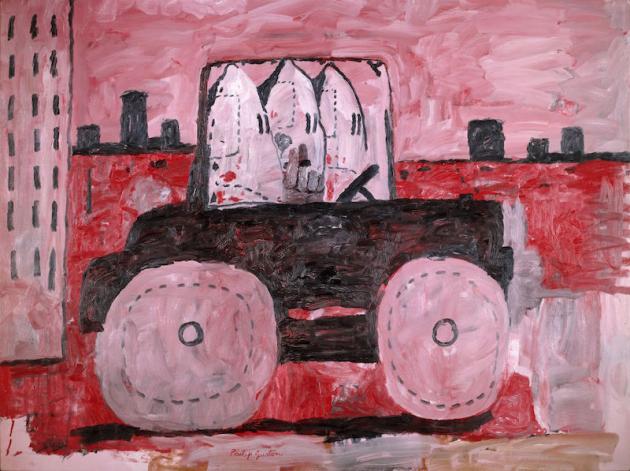It was returned with bullet holes where the eyes once were. The LA police had used Guston’s painting of the Scottsboro Boys – near victims of a lynch mob and certain victims of a miscarriage of justice – as target practice after the “Red Squad” had confiscated it. They would have lynched him if they could. It was a warning, but Philip Guston, only 18 years old at the time, was not to be deterred. It was about freedom.
He painted monumentally evil Klansmen lynching blacks who would just as readily have done the same to Guston. He painted monumental workers fighting for justice and equality. He painted a world divided into monumental good and monumental evil.
The climate changed after the Great Depression and World War II. Economic stability meant that the once hungry and unemployed were now unionised workers with small homes in the suburbs leading ordered, simple lives free from all the nightmares that they had just suffered. It was neither the time nor the place to be political, so Guston, like his friend Jackson Pollock and so many other artists, moved to New York and expressed his inner self through abstract expression. Guston produced pleasant lyrical paintings that were easy on the eye.
Then, in the late sixties, with the war in Vietnam and the protest movement, the climate changed once again. The Klansmen reappeared, no longer monumentally evil, but as cartoon characters with cigars and bottles of booze driving around in cartoon cars. The evil came from within this time. It isn’t them, it is us.
The naive cartoon figures were placed in highly sophisticated, often extremely daring compositions, never sitting quite right, and making for tense viewing that was not easy on the eye. The tones of reds, pinks, greys and blues, sometimes dotted with a small area of green, were rich and varied. They were no longer merely about formal colour field perfection, about cropping an inch off the top or modifying a tone at the behest of critics and gurus and art teachers who claimed a better eye than had the rest.
Many hated the new paintings when they were first shown, the critics were negative, friendships ended, painters stopped talking to him, and the Marlborough Gallery did not renew his contract. They would have lynched him if they could. But Guston was not to be deterred. It was about freedom.
Zev Robinson is a Canadian-British artist and filmmaker living in Spain, working on The Art and Politics of Eating project. © artlyst 2016
Image : Philip Guston City Limits, 1969. Oil on canvas, 77 × 1031⁄4 in. (195.6 × 262.2 cm). The Museum of Modern Art, New York, Gift of Musa Guston, 1991.

